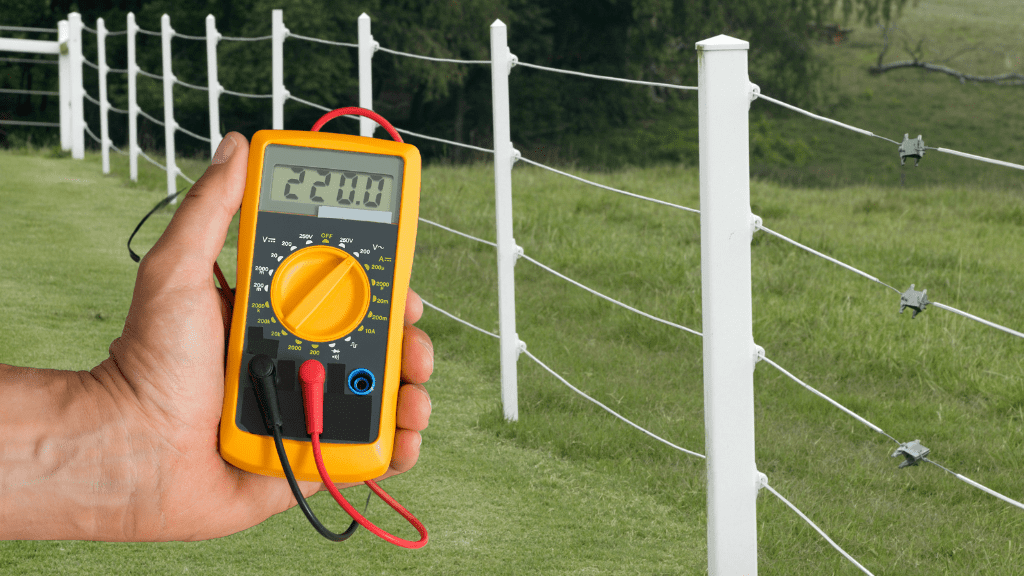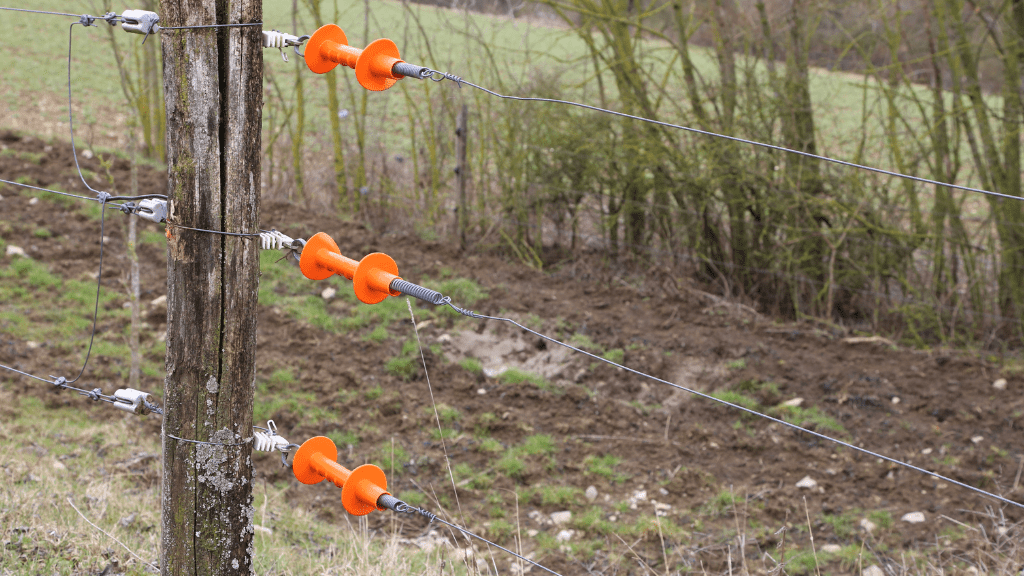How To Test Electric Fence With Multimeter
Whether to keep out coyotes and other wild animals or keep your farm animals so they don’t escape, electric fences may be deployed for many reasons.
Using them is particularly important for individuals who operate farmlands.
However, if the right amount of current isn’t running through your electric fencing wire, it doesn’t appropriately perform its function.
If you are unsure how to determine the voltage of an electric fence, don’t worry!
You have come to the right place. Let us walk you through the process of checking the voltage of an electric fence step by step.
Let’s get right in.

How An Electric Fence Works
Electric fences are generally made up of three components
- The fence energizer,
- Grounding rods,
- Fencing posts, and
- Naked steel wires.
The fence energizer converts a constant power to a pulse of high volt supplied to the fence.
This pulse of volts is released to the steel wires held up by the fencing posts at least once a second and carries enough punch to deter animals from it.
The ground rod is another important component, as the fence doesn’t produce enough current without it.
The rod is inserted into the earth and connected to terminals on the fence.
Once an animal makes contact with the fence and earth simultaneously, it gets zapped with high volts.
The volt depends on the energizer’s supply and may cause uncomfortable shocks, very painful zaps, or even death.
That’s all about how electric fences work.

Let’s move to how you may use a multimeter to test if your electric fence is operating properly or not.
Tools Required to Test an Electric Fence
- A multimeter
- 2 leads (one red for positive and one black for negative)
- A metallic rod
- Electric rubber insulated gloves
- Safety goggles
- Closed-toe shoes
How To Use A Multimeter To Test An Electric Fence
Set the multimeter to the kilovolts (kV) range, place the positive multimeter probe on one of the electric fence wires, and ground the negative multimeter probe on any metal surface nearby. If the electric fence works properly, the multimeter should read what the manufacturer specifies.
The process is as simple as that, but we will explain each step further for proper understanding.
- Set The Multimeter To The Kilovolts Range
Due to what they are used for, electric fences hold a high amount of current, measuring thousands of volts.
This means that your digital multimeter (voltmeter) needs to be set to a high Kilovolts range to take accurate measurements.
You know it is set to kilovolts when you have “kV” displayed on the multimeter screen.
Now, not all multimeters may be set to the kilovolt range.
Many digital multimeters around your home typically have a maximum range of 600V.
This means you need to use one particularly meant for measuring very high volts.
Additionally, the electric fence may be holding alternating current (AC voltage) or direct current (DC voltage), depending on the energizer you use.
You may refer to the electric fence manual to determine what current passes through it.
- Place Multimeter Probe On Electric Fence
The next step is to place your voltmeter leads in the appropriate positions.
Place the red (positive) multimeter probe on one electric fence wire and ground the black (negative) multimeter probe on any metal surface close by.
This should be a metal surface without current through it.
Ensure that your voltmeter leads are making proper contact at their different contact points so that you get the most accurate reading.
- Check Multimeter Reading And Evaluate Results
Once your multimeter probes have been placed at the appropriate positions, your multimeter is expected to produce a reading.
You may check your manufacturer’s guide to know if your electric fence is holding a good amount of volt.
Nonetheless, electric fences typically hold current between 6000 and 10000 volts. The average reading falls at 8000 volts.
There is more to note, however. The volt in an electric fence may be reduced by 500V to 2000V, which is okay.
You usually see this drop in voltage in the morning when there is moisture on the posts or vegetation around the fence, causing a voltage leak.
Any drop of more than 2000V means that your electric fence is not carrying enough volts and may not appropriately serve its purpose.
There are several reasons for this huge drop in current.
Causes Of Low Voltage In Electric Fence
Some of the reasons your fence may not be carrying enough volt include;
- An energizer that doesn’t fit the specifications for the fence. This energizer is underpowered or designed to produce fewer volts than the fence wire needs. Your solution is to replace this energizer.
- A short circuit within the electric fence system may also be responsible for low current.
- One other reason is vegetation or any conductor around the fence. When vegetation is wet, or a piece of metal is grounding the fence wire, there could be a voltage leak.
You check around the fence and ensure no material is causing a leak.
A lower volt reading may also be a combination of all of these factors.

What if you don’t have a manual for the electric fence or want to know the appropriate reading for certain use cases?
Electric Fence Voltage Recommendations
As we have mentioned before, using an electric fence wire is important for many reasons.
The most common of these is to keep out animals from a property or keep animals within an enclosure so they don’t get loose.
Different animals have different voltage recommendations.
These recommendations ensure you zap them with enough volts for them to remember without getting hurt.
- Wildlife – 7000V to 8000V
- Poultry (any featured animal) – 7000V
- Sheep – 7000V
- Horses – 4000V / 5000V
- Pigs – 4000V / 5000V
- Pets (Dogs and Cats) – 4000V

A voltage tester may test the volt running through each electric fencing wire.
You place the tip of the tester on a fencing wire, and it gives you a reading.
Conclusion
Like diagnosing other electrical components, testing an electric fence with a multimeter is very straightforward. It only gets a little complex when you have to determine whether the voltage running through the fence is enough.
Frequently Asked Questions
What Should The Voltage Be On An Electric Fence?
The voltage on an electric fence is usually between 6000 to 10000 volts, with this number reducing by 2000V at intervals. The average volt for electric fences stands at 8000V.
Is An Electric Fence AC or DC?
An electric fence may either be powered by AC voltage, DC voltage, or solar power. The type of current passing through an electric fence depends on the energizer used.
What Happens If You Don’t Ground An Electric Fence?
An electric fence does not produce enough shock if it isn’t grounded. Most electric fences need at least three grounding rods for the energizer to reach its full potential.
How Do You Touch An Electric Fence Without Getting Shocked?
Unless you have turned off the power supply to the electric fence, there is no safe way of touching it without getting shocked. You shouldn’t do it, as touching a live fence is dangerous.

Author
Alex Klein is an electrical engineer with more than 15 years of expertise. He is the host of the Electro University YouTube channel, which has thousands of subscribers.
